Song: Algorithmic Art Curation
1. Automated Artwork Classification and Tagging
AI-based image recognition can automatically label and categorize artworks by style, subject, era, and other attributes. Using computer vision models, curators can tag thousands of images with consistent metadata (e.g. “Impressionist,” “portrait,” “sculpture”) much faster than manual curation. This accelerates tasks like cataloging and improves searchability across a museum’s database. It also helps less-experienced staff access expert-level tagging by learning from annotated datasets. As a result, collections become more organized and discoverable. Overall, automated tagging allows curators to manage large or diverse collections efficiently while maintaining accuracy and consistency.
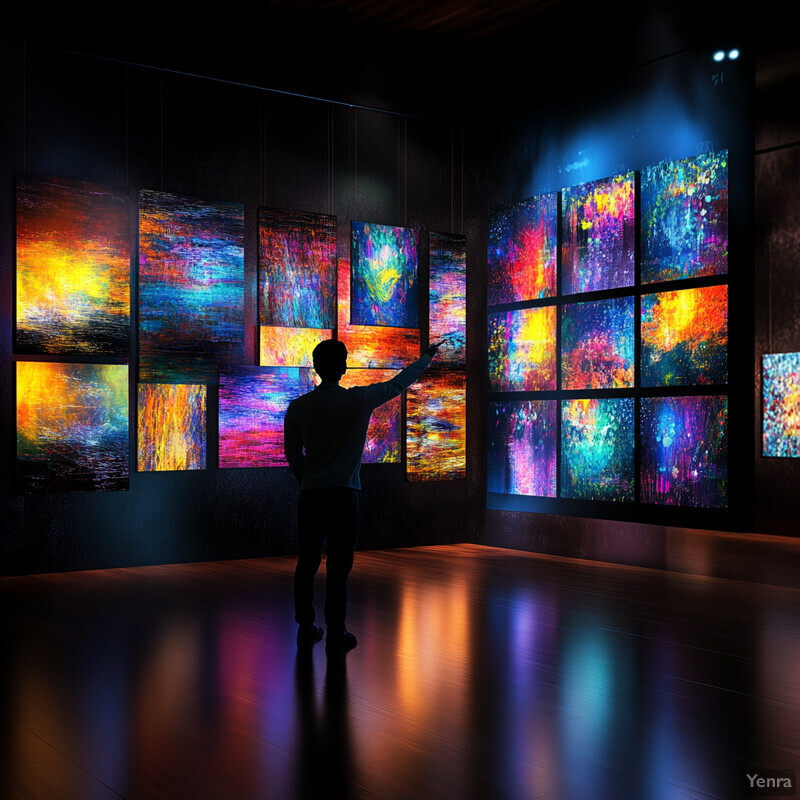
Recent studies demonstrate that tailored AI models significantly improve classification accuracy. For example, El Vaigh et al. (2025) showed that a graph‑enhanced deep network (GNNBoost) achieved 6–12% higher accuracy on art style classification tasks (such as Ukiyo-e and Buddhist art) than plain image models. They combined image embeddings with related metadata (e.g. artist, period) to better distinguish styles. In contrast, Balauca et al. (2024) found that even a state-of-the-art vision-language model (CLIP) reached only about 50.7% top-1 accuracy on a fine-grained museum classification test, underscoring the task’s difficulty. These results suggest that specialized AI significantly outperforms naïve models. In practice, convolutional networks fine-tuned on art datasets can reliably identify art genres or artists. Automated tagging tools have already been deployed in some institutions to auto-generate keywords and metadata, freeing curators from repetitive manual labeling and improving collection search.
2. Visual Similarity and Style Clustering
AI algorithms can group artworks based on visual similarity or stylistic features, aiding curators in identifying related pieces. These tools analyze color palettes, textures, brushstrokes and overall composition to cluster works that “look alike.” For example, paintings with similar color schemes or brushwork might be automatically grouped as a sub-genre. Clustering like this helps reveal hidden relationships across a collection and suggests thematic exhibitions. It also provides visitors with interactive “more like this” exploration of visual styles. Overall, style-based clustering allows curators to organize and discover artworks in new ways that keyword tags alone might miss.
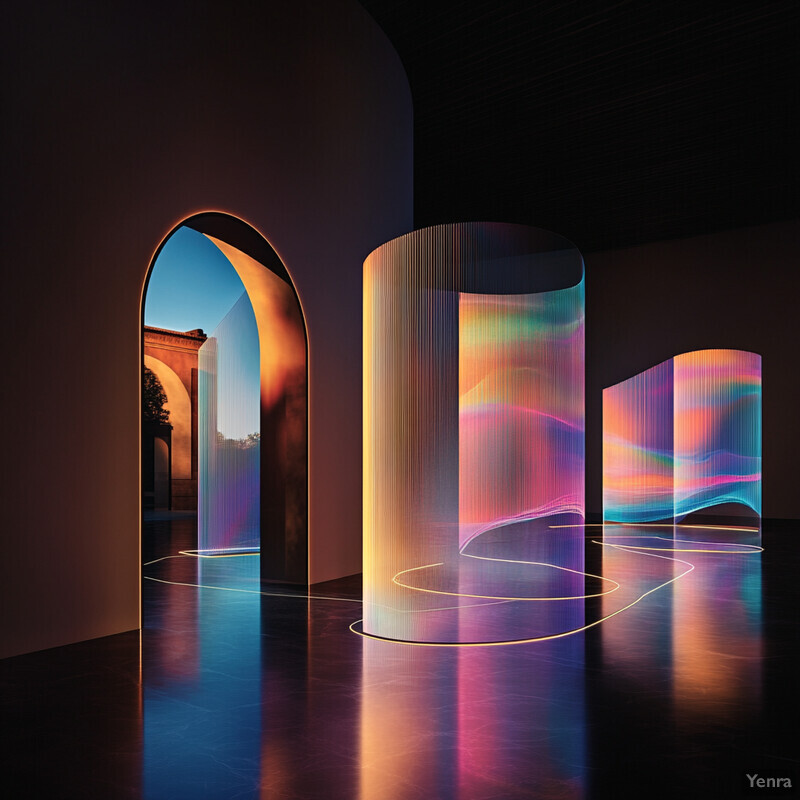
Research has shown that neural networks can effectively cluster artistic styles when properly trained. Dangeti et al. (2024) developed a model specifically for style-based clustering of visual artworks. They demonstrated that adapting pretrained models (e.g. CLIP) with style-focused learning significantly improves grouping of paintings by genre or artistic movement. In their experiments, the style-aware model achieved notably higher clustering performance on benchmark art datasets compared to generic feature clustering (Dangeti et al., 2024). This suggests AI can detect subtle stylistic cues. Other studies (e.g. CNN-based retrieval) similarly confirm that deep features capture aesthetic similarities. These findings indicate that AI systems can autonomously form coherent style clusters, which curators can use to evaluate collection balance or to plan thematically linked exhibits (Dangeti et al., 2024).
3. Personalized Recommendations for Visitors
AI-driven recommendation engines can tailor museum content to individual visitors. By analyzing a visitor’s interests (from explicit preferences or past behavior), these systems suggest artworks or tours most likely to engage that person. This is similar to how Netflix or Spotify recommend movies or music. For example, if a visitor shows interest in abstract paintings, the system might highlight related works or upcoming shows. Such personalization makes visits more engaging by surfacing hidden gems aligned with user taste. It also helps visitors navigate large museums by filtering vast collections into a custom experience. In practice, AI chatbots or apps provide real-time, customized guidance, enhancing both educational value and satisfaction for each visitor.
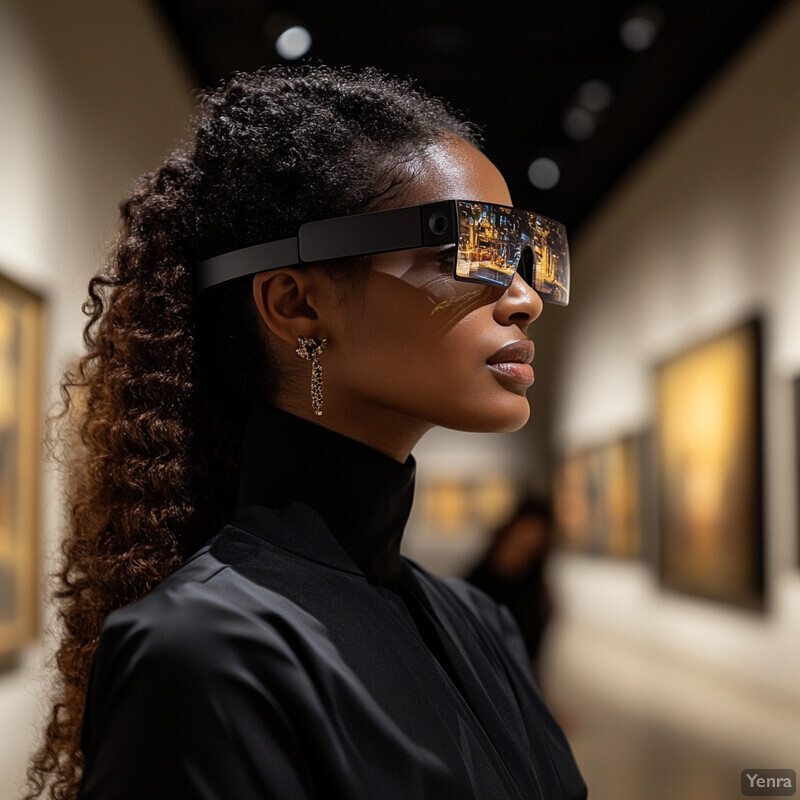
Early implementations demonstrate the impact of AI personalization. Ivanov (2024) describes a “smart badge” system that profiles each museum visitor using location and interest data. The system delivered customized content to individuals in real time, and surveys showed it significantly boosted visitor engagement and satisfaction. Specifically, personalized profiles allowed targeted exhibit recommendations and learning materials for different visitor types. Similarly, pilot projects have used large language models as conversational guides: chatbots powered by GPT-4 have been tested to answer visitor queries and suggest exhibits based on dialogue history. Overall, evidence from these case studies indicates that AI-powered recommendation tools can meaningfully enhance the visitor experience by aligning exhibits with personal interests (Ivanov, 2024).
4. Intelligent Exhibition Planning Tools
AI can aid curators in designing exhibitions by simulating layouts and optimizing exhibit flow. For example, algorithms can model virtual floor plans, arrange artworks spatially, and predict visitor movement patterns. They can test different configurations quickly, highlighting how changes affect crowding or thematic coherence. Such tools reduce manual trial-and-error by generating data-driven proposals for exhibit design. This streamlines planning cycles and helps identify innovative display ideas that maximize engagement and space use. In summary, AI-driven planning tools give curators smart suggestions for gallery arrangements, ensuring a logical and visitor-friendly experience.
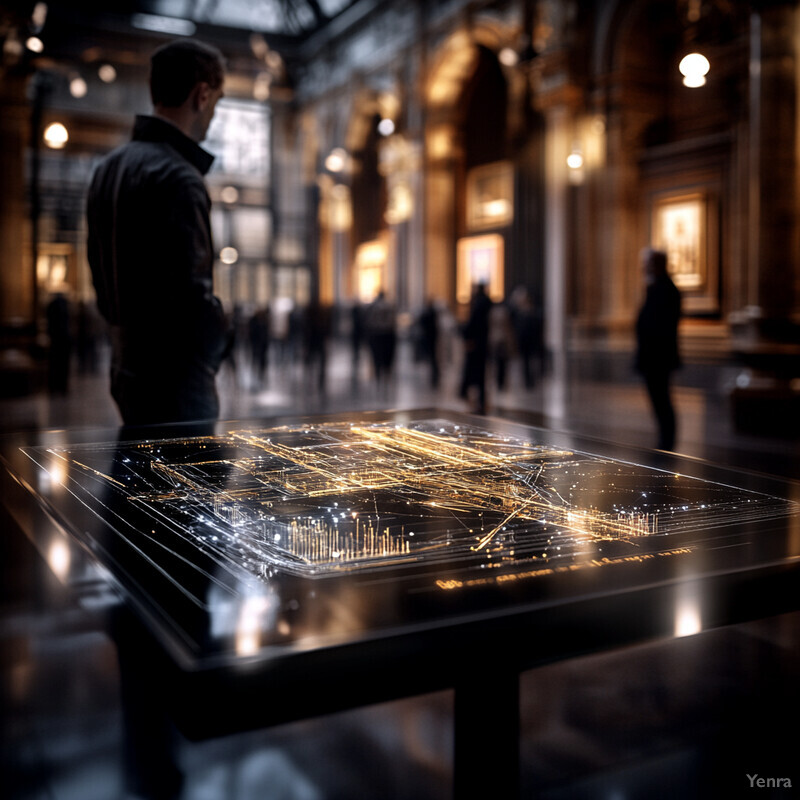
Recent research shows AI can generate realistic gallery layouts. Chen et al. (2024) built a deep learning model (using a Conditional GAN) trained on actual museum floor plans. Their system could automatically produce new, coherent exhibition layouts after seeing only a few examples. The authors report that the AI significantly shortens the design cycle: it “quickly generates [floor plans], greatly shortening the planning cycle” and offers novel solutions for curators. In experiments, the model created many valid floor plans, giving curators a diverse set of options. In addition, it preserved exhibit groupings and visitor pathways seen in real layouts. This work demonstrates that AI can propose intelligent gallery designs, integrating curation criteria learned from previous exhibitions (Chen et al., 2024).
5. Predictive Trend Analysis
AI systems can analyze large cultural datasets (social media, sales, attendance) to forecast art and audience trends. By mining online chatter, auction prices, and visitor records, they identify emerging popular artists or styles before they peak. For instance, rising social media buzz around a contemporary artist can signal demand. AI models can also project future attendance for certain themes or forecast which kinds of exhibitions will attract audiences next season. These predictive insights help curators plan acquisitions and exhibitions proactively, aligning with predicted public interest. Ultimately, trend analysis with AI helps institutions stay ahead of shifts in cultural taste and maximize future engagement.
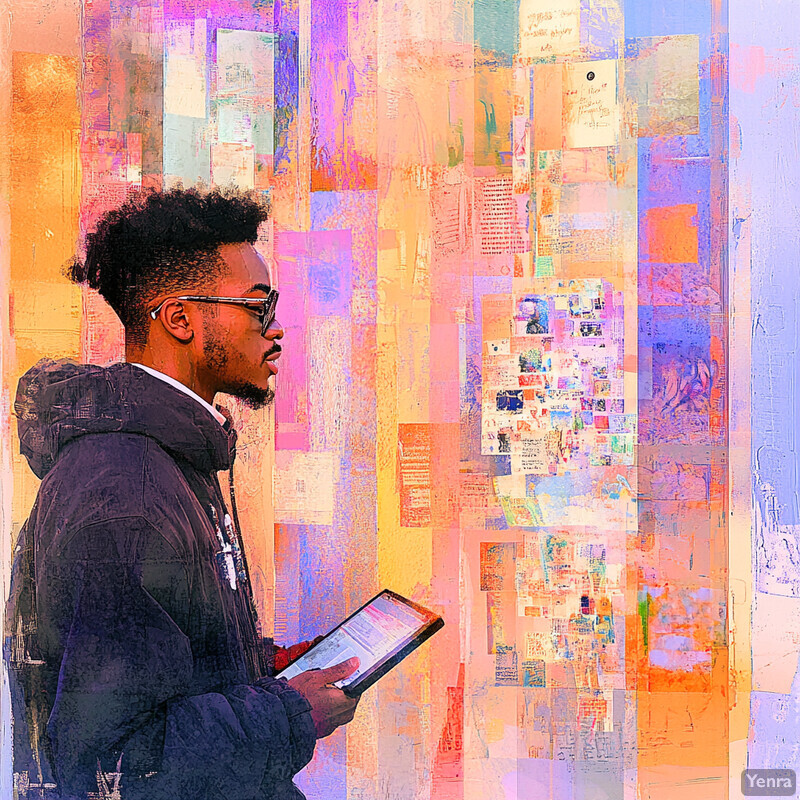
Empirical studies show AI excels at market trend prediction. Lee et al. (2024) analyzed global art auction data with machine learning. They found that social media metrics and online “likes” predicted artwork prices significantly better than any visual analysis of the paintings themselves. In fact, their model using social signals matched the accuracy of professional appraisers. This suggests that AI can detect market momentum via social trends. Other work has used natural language processing on art reviews and attendance statistics to forecast exhibition popularity. Together, these cases demonstrate that AI-driven data mining can effectively anticipate cultural trends, informing curatorial strategy (Lee et al., 2024).
6. Contextualizing Art with Metadata
AI can enrich artworks by automatically linking them to historical and cultural context. For example, natural language processing can extract relevant facts from large archives or the internet and associate them with an artwork’s metadata. Curators can then provide visitors with summaries of an artist’s biography, the era’s history, or related works in other collections. AI can also generate semantic tags and relationships (e.g. themes, influences) to make context visible. By filling in background information (dates, motifs, cultural references), these tools ensure each piece is presented with richer storytelling. In essence, AI-driven metadata provides depth, helping visitors and curators understand each artwork’s significance.
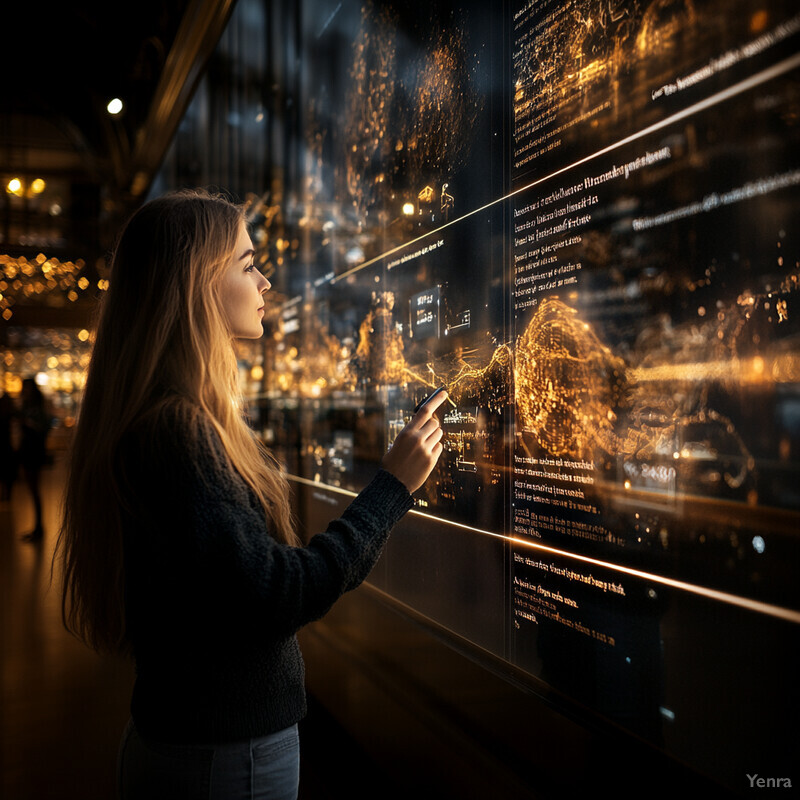
Recent work demonstrates automated context linking. Huang et al. (2023) built a knowledge graph of cultural heritage by extracting facts (triples) from museum records and literature. Their system automatically mapped relationships (artist, location, theme) to objects, making contextual data “easily accessible” to curators. This shows AI can systematically gather provenance and cultural info at scale. Policy guidelines also highlight the value of heritage data: the Council of Europe (2024) notes that cultural datasets are “priceless resources” for training AI (e.g. in language translation or recognition tasks). In practice, this means AI can use existing metadata and texts to generate accurate content summaries, effectively adding contextual description that was previously manual. Such evidence implies that AI can automate much of the metadata enrichment needed to place art in context (Huang et al., 2023).
7. Quality and Novelty Assessment
AI can evaluate the visual “quality” and novelty of artworks using computational aesthetics. Models trained on large image datasets can output an “aesthetic score” based on learned features like balance, color harmony, or complexity. This helps curators identify standout works or especially innovative pieces in a collection. AI can also flag novel art by measuring how statistically unusual a work is relative to its peers. Together, these tools highlight artworks likely to captivate audiences. While aesthetic judgment is subjective, AI provides objective data points (e.g. predicted appeal) that assist in selecting works for display or publication.
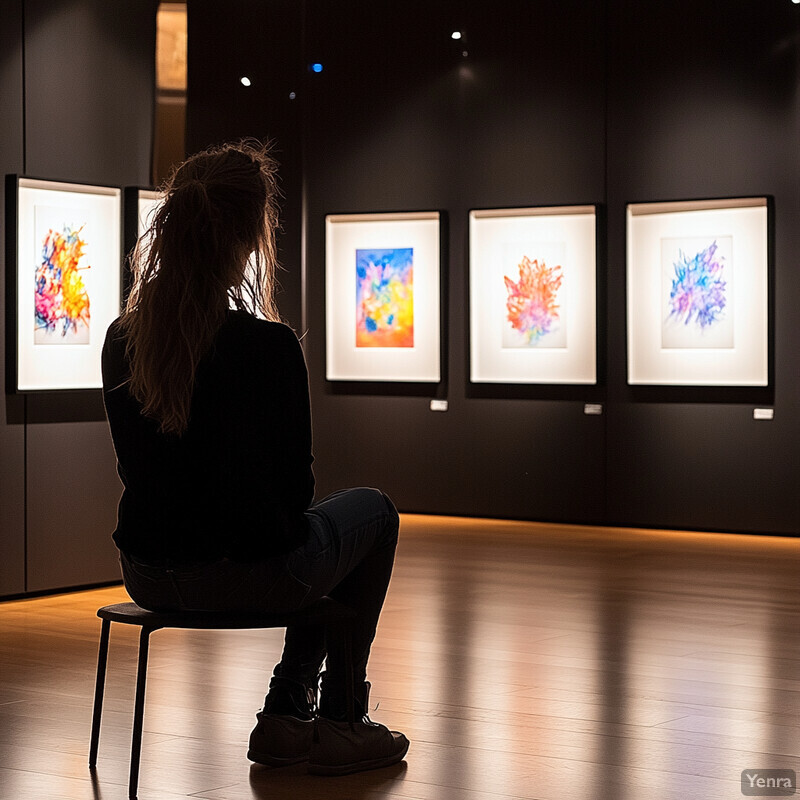
Studies show AI can learn general aesthetic preferences. Yi et al. (2023) created a large dataset of 60,000 paintings with crowd-sourced beauty ratings and trained a neural network to predict these scores. Their model achieved high correlation with human ratings, indicating AI can estimate perceived attractiveness of art. This work establishes a baseline for automated “quality” scoring. In terms of novelty, some research in related fields has begun to measure creativity by detecting unusual patterns, though this is nascent in art. Overall, experimental evidence (like Yi et al.) confirms that AI-driven aesthetic assessment is feasible: it can screen out less engaging works and highlight those of high computational “interest,” giving curators additional quantitative insight (Yi et al., 2023).
8. Cohesive Collection Management
AI tools help manage entire collections by analyzing scope and coherence. They can detect redundancies (e.g. multiple images of the same object) and gaps (e.g. underrepresented styles) within holdings. By clustering related items, AI highlights overlaps or missing categories. This assists curators in balancing the collection’s breadth. AI also automates the tedious process of indexing and cross-referencing thousands of items, ensuring a unified tagging scheme. The result is a more cohesive and navigable collection: curators gain an automated overview of their holdings’ coverage and can strategically address imbalances or redundancies.
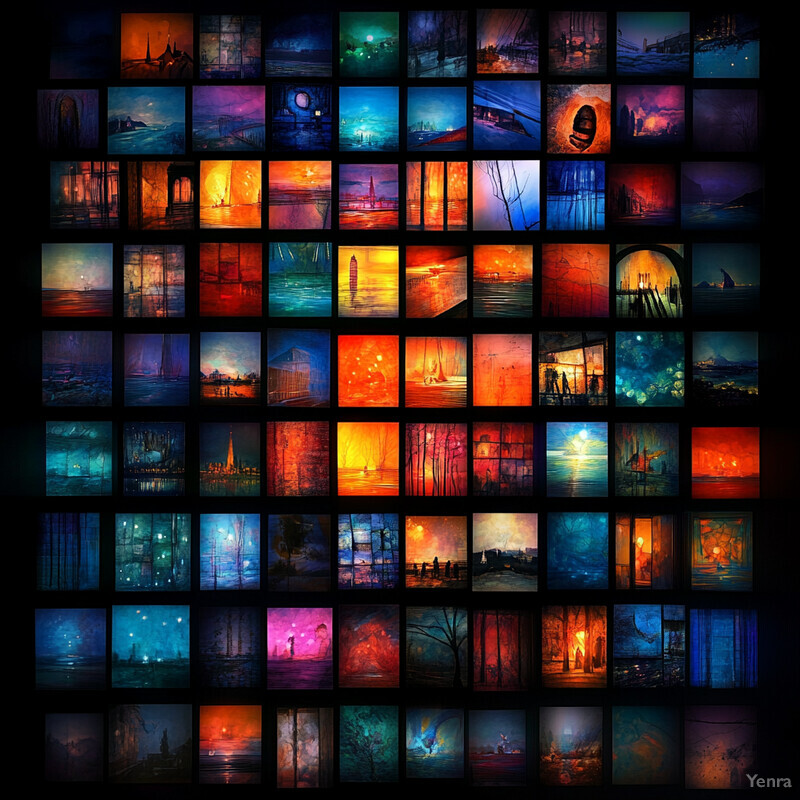
Industry reports note that integrating AI into collections accelerates many management tasks. The American Alliance of Museums (2024) observes that AI-powered systems can automatically generate keywords, descriptions and tags for large digital archives aam-us.org . By boosting discoverability, these tools implicitly reveal where related items cluster. For example, if many artworks share AI-generated tags but one notable style has few, this signals a gap. AI can also flag nearly identical images, helping remove duplicates. In practice, museums using such AI-enhanced cataloging have reported faster inventory reviews and better cross-referencing. These advances imply that AI can give curators a comprehensive, data-driven picture of their collections’ consistency and coverage (American Alliance of Museums, 2024).
9. Audience Sentiment and Response Analysis
AI-driven sentiment analysis can interpret how audiences feel about exhibits by analyzing comments, survey responses or social media. Natural language processing identifies positive or negative reactions to artworks or events. Computer vision can also gauge emotional expressions in visitor photos or videos. Curators use this feedback to understand which pieces generate excitement, confusion, or criticism. Such insights guide exhibit adjustments and program development. For instance, if many visitors post enthusiastic reviews of a particular painting, the museum might highlight that theme in future programming. In summary, sentiment AI turns qualitative feedback into measurable trends that inform curation decisions.
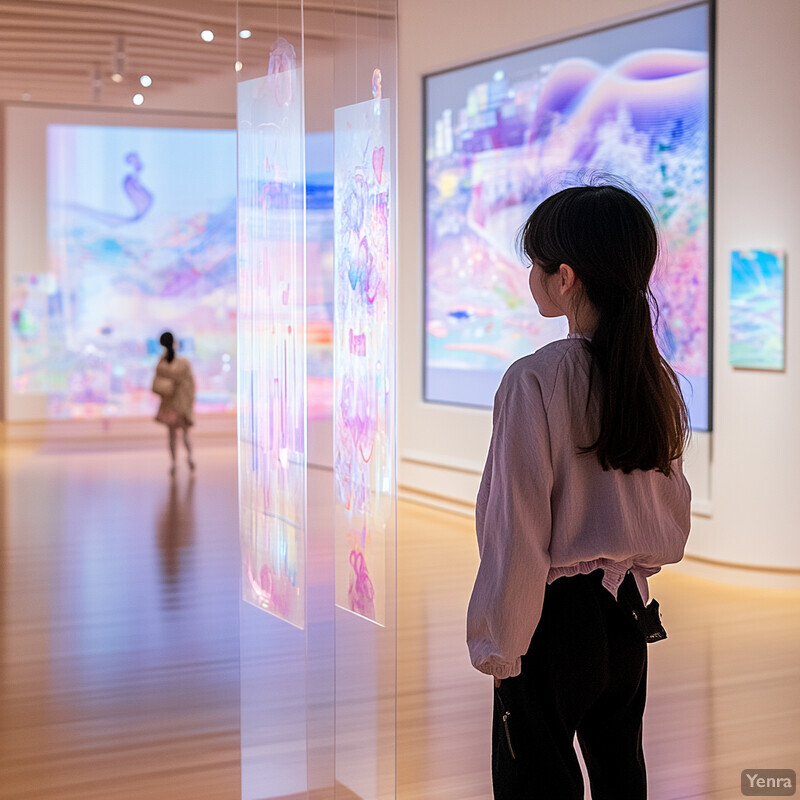
In experimental settings, AI methods have successfully captured visitor sentiment. Guo et al. (2025) conducted a study of audience reactions to an AI-generated exhibition using NLP and topic modeling. They found distinct emotional themes (e.g. curiosity, skepticism) emerging from visitor feedback and online reviews. Their approach combined emotional word detection and clustering, revealing nuanced responses that conventional analysis missed (Guo et al., 2025). Although still early research, this demonstrates that AI can systematically extract audience sentiment from free-text data. Museums using similar tools have reported uncovering unexpected insights (such as identifying a lesser-known artist receiving disproportionately high praise). In sum, case studies show AI sentiment analysis provides valuable evidence about audience engagement, supplementing traditional evaluation methods (Guo et al., 2025).
10. Enhanced Accessibility and Discovery
AI can make art more accessible and help people discover new works. For example, automated image captioning and audio description enable visually impaired visitors to “hear” paintings. Real-time sign language avatars and speech recognition provide access to the hearing-impaired. On the discovery side, AI search engines use semantic understanding to surface relevant but obscure artworks: a visitor’s interest in one piece can trigger recommendations of similar yet lesser-known works. Multilingual translation tools allow non-native speakers to access exhibit text. Together, these AI solutions break down language, sensory and knowledge barriers, so a wider audience can engage with art and find meaningful connections across a collection.
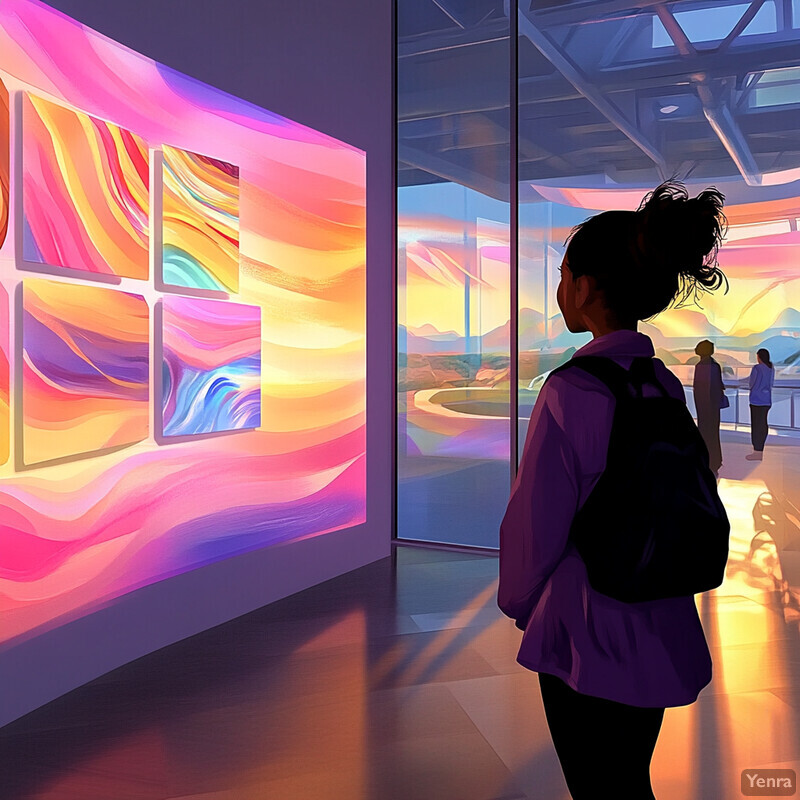
Technology demonstrations illustrate these benefits. A recent tech industry case study (Terentia, 2023) highlights museum tools that auto-generate audio descriptions and provide sign-language translations, greatly enhancing accessibility for disabled visitors. Similarly, AI-powered search platforms have extended beyond keyword matching: the American Alliance of Museums (2024) notes that semantic search can connect artifacts by concept or theme, not just tags aam-us.org . For instance, an intelligent search might find all nature-themed items even if not explicitly tagged “nature.” These reports underscore that AI is actively used to expand accessibility and discovery. While systematic studies are few, industry pilots confirm AI’s role in opening up art to diverse audiences (Terentia, 2023; American Alliance of Museums, 2024).
11. Dynamic Online Galleries and Virtual Exhibitions
AI powers dynamic online and virtual exhibitions that can be updated and personalized. In a virtual gallery, algorithms can curate and arrange artworks on the fly, creating interactive experiences. For example, AI might select artwork groupings based on visitor navigation patterns or allow global audiences to “walk” a museum via VR. Virtual exhibits are not limited by physical space, so AI can blend objects from different collections and eras seamlessly. These platforms often include recommendation features and multimedia layers, making the experience more immersive. Overall, AI-driven virtual curation enables 24/7, global access to exhibitions that evolve with user engagement and content.
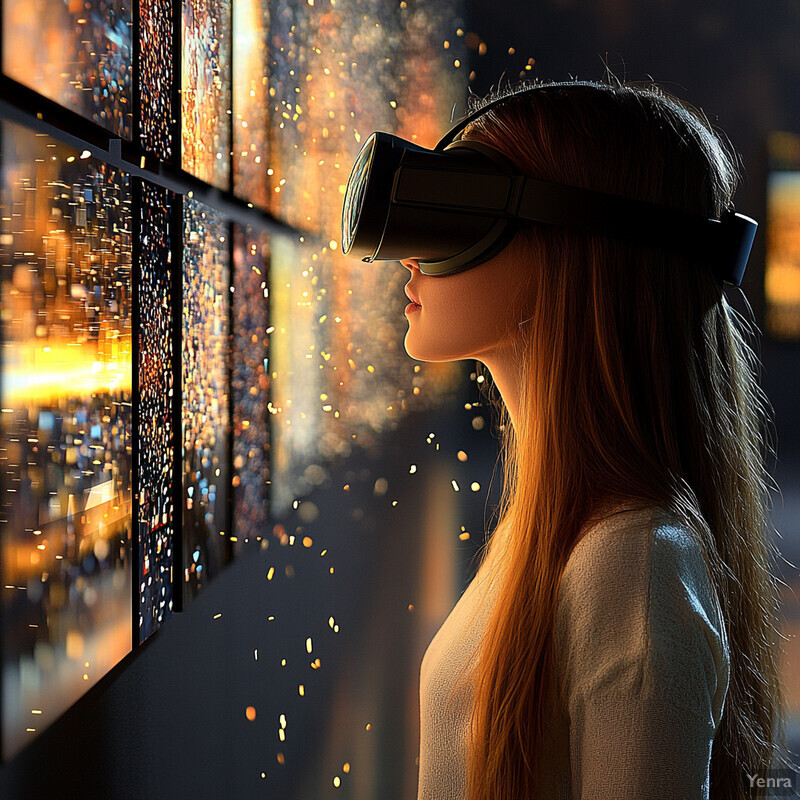
Studies of virtual exhibits emphasize their flexibility and potential. Albrezzi (2024) analyzed curator-built virtual exhibitions and found that the lack of physical constraints allowed far more creative combinations. She notes, “In a virtual exhibition, curators can present artworks from different periods, geographies, and media in conversation,” something impractical in real space. Her work also highlights the “infinite space” of digital galleries that enables ever-expanding shows. These observations indicate that AI-curated virtual exhibits can dynamically incorporate diverse content – for example, automatically updating tours with new acquisitions or visitor-generated content. While rigorous evaluations are limited, Albrezzi’s case studies demonstrate how AI and digital tools are already reshaping what an exhibition can be (Albrezzi, 2024).
12. Automated Attribution and Provenance Research
AI assists in attributing artworks to artists and tracing provenance by analyzing intrinsic features. Models can examine brushstroke patterns, pigment composition, or style signatures in high-resolution images. By comparing these to a database of authenticated works, AI can suggest likely authors or detect forgeries. It can also cross-reference texts and archives to uncover ownership histories. This accelerates attribution research: tasks that took experts months may be narrowed down by AI to a few candidates. Although experts must still confirm results, AI provides powerful clues in authentication and provenance documentation.
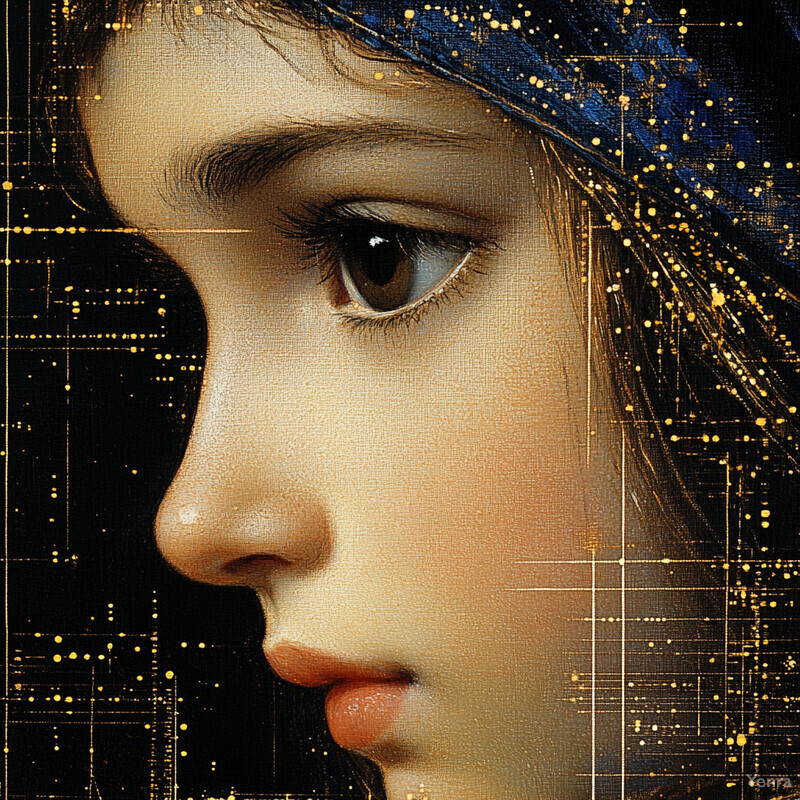
Recent advances illustrate AI’s power in attribution. Ugail et al. (2023) applied transfer learning to classify paintings by artist (focusing on Renaissance masters). Their deep learning model achieved 98% accuracy distinguishing authentic Raphaels from fakes, using image features like painted edge structure. This shows AI can learn subtle stylistic signatures. The authors concluded that such computational analysis “can enhance and expand” traditional art authentication methods. Other efforts use spectral imaging: for example, a 2025 industry report described a CNN trained on X-ray pigment data that identified materials like lead white or vermilion, helping flag anomalies characteristic of forgeries. These cases indicate that AI-driven analysis (both visual and material) is becoming a valuable tool for attributions and provenance research (Ugail et al., 2023).
13. Adaptive Educational Content
AI enables museum education to adapt to each learner. For example, interactive exhibits can adjust difficulty or explanation style based on a visitor’s age or knowledge. AI-powered quiz games can vary questions if a visitor answers too easily. Smart guides and chatbots tailor language complexity for children versus experts. Adaptive content keeps visitors engaged by providing the right level of challenge, reinforcing learning. By personalizing educational experiences in real time, AI helps museums teach more effectively and meet diverse learning needs.
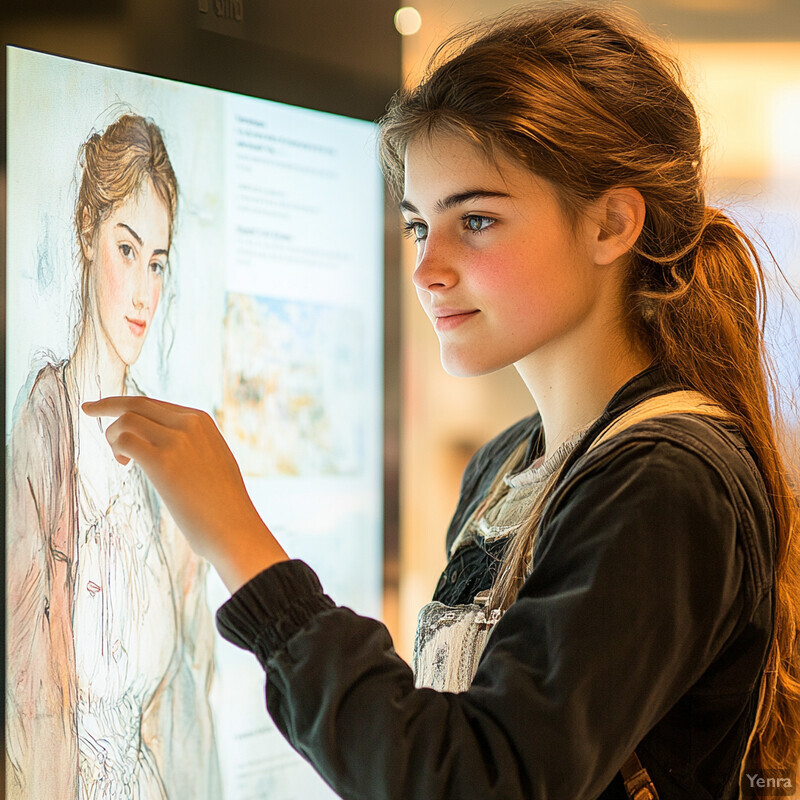
Research shows these benefits in practice. Liang et al. (2024) developed an AI chatbot for a museum’s game-based learning module. Their study found that students using the AI tutor showed significantly higher engagement and better learning outcomes than a control group. The chatbot provided adaptive hints and feedback, increasing emotional and metacognitive engagement. This demonstrates that AI-driven interactivity can effectively customize learning: students received personalized guidance that responded to their actions (Liang et al., 2024). Other work in educational technology similarly shows that AI tutors and adaptively curated content can improve museum learning by matching content to user ability.
14. Multilingual and Cross-Cultural Curation
AI bridges language and cultural divides in art curation. Machine translation can automatically render exhibit labels and descriptions into many languages, making content accessible to international visitors. AI chatbots can provide guided tours in the visitor’s native language on demand. Cross-cultural recommendation systems use AI to suggest thematically related artworks from different cultures (e.g. “paintings depicting water rituals worldwide”). In these ways, AI ensures that museum content resonates across cultural contexts. It allows global audiences to engage with art without language barriers and encourages inclusion by highlighting diverse perspectives in multilingual formats.
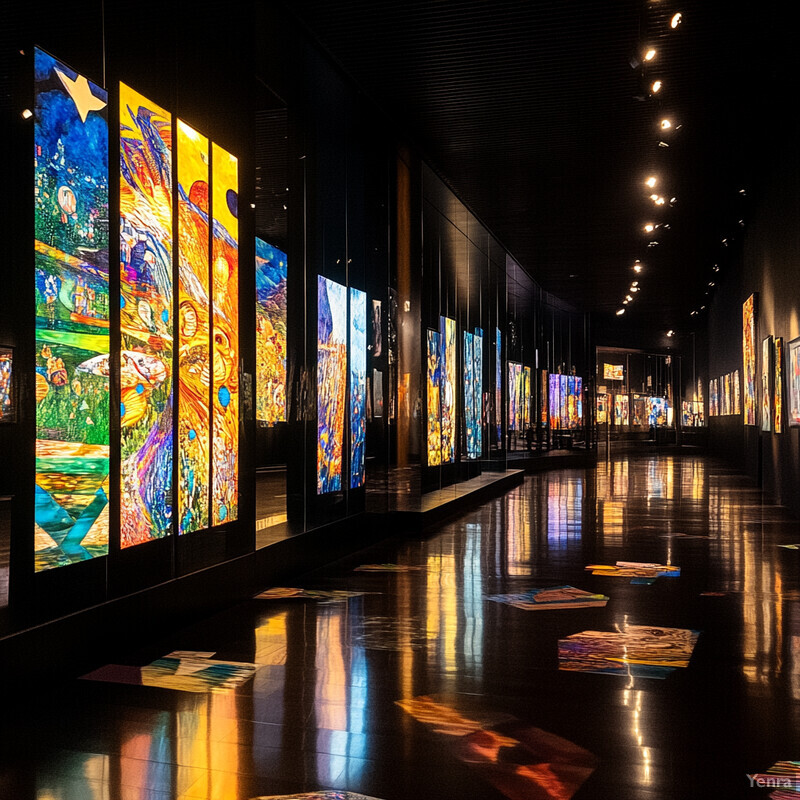
Studies and guides illustrate these possibilities. Yang and Cui (2023) explored AI-mediated museum experiences in China, highlighting multilingual AI tools. They note that AI-powered chatbots, VR tours and translation services can “realize multilingual and multidimensional mediation” of museum content. For example, their case study showed a wearable translation assistant delivering exhibit information in real time. The authors conclude that AI greatly enhances cross-cultural access by automating language and contextual adaptation. Industry examples (e.g. the EU’s Europeana or Google Arts & Culture) similarly rely on AI to translate metadata and descriptions. Taken together, these sources indicate that AI translation and localization tools are actively enabling truly global museum experiences (Yang & Cui, 2023).
15. Fraud and Forgery Detection
AI helps detect forged artwork by finding inconsistencies in visual and material features. Machine learning models analyze fine-grained details like brushstroke patterns or pigment spectra that are difficult for humans to quantify. By comparing these subtle features against a database of genuine works, AI can flag anomalies indicative of fakes. For example, it may spot that a purported old master has modern pigments. Such automated analysis speeds up authentication and can uncover forgeries that mimic an artist’s style superficially. While expert validation remains necessary, AI provides a powerful screening tool for provenance research.

Cutting-edge research demonstrates AI’s effectiveness in forgery detection. Azimi et al. (2025) trained a GAN-based model on high-resolution oil painting images (including reflectance depth information) to capture an artist’s unique brushstroke “signature.” Their system successfully distinguished original paintings from skillful counterfeits. Remarkably, it identified forgeries that deliberately imitated the original style, achieving reliable detection by focusing on texture and depth patterns. The authors emphasize that GAN-generated depth maps allow the model to see beneath the surface strokes in a way humans cannot. Other work uses spectral data: AI models analyzing X-ray or infrared scans can detect modern pigments or irregular layering. These studies illustrate how machine learning augments traditional forensic methods, providing quantitative evidence of authenticity (Azimi et al., 2025).
16. Event and Marketing Optimization
AI aids in optimizing museum events and marketing strategies using data analytics. Algorithms can predict which exhibitions or programs are likely to attract the most interest based on past attendance and demographics. They can segment audiences for targeted promotions (e.g. social media ads tailored to art styles a user likes). By analyzing ticket sales patterns, AI can also advise on optimal event scheduling and pricing. The outcome is more effective outreach: museums can allocate resources to the highest-impact events, personalize marketing campaigns, and ultimately increase attendance and revenue.
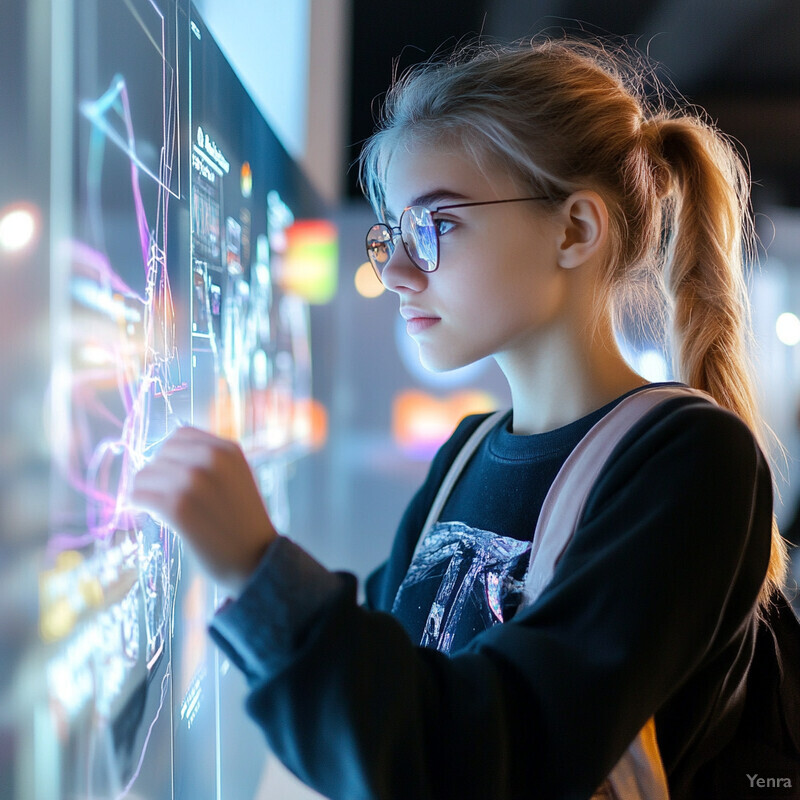
Case examples suggest these benefits. One industry analysis (Pang, 2024) describes how museums use AI to analyze visitor preferences and customize offerings. The report notes that by tailoring merchandise and exclusive experiences to visitor data, museums saw higher revenue and repeat visits. The author also highlights that museums collecting visitor behavior data (demographics, interests) can feed it into AI-driven marketing tools to refine engagement. For example, AI platforms now help design email or ad campaigns based on likely interest in upcoming exhibits. While peer-reviewed studies on this are scarce, these professional and trade sources indicate that data-driven marketing (enhanced by AI) is already showing positive results in driving attendance (Pang, 2024).
17. Optimized Gallery Layouts
AI can refine the physical arrangement of exhibits to improve visitor flow and experience. Using simulation and optimization, these tools suggest where to place artworks and how to partition space. For example, an AI system might rearrange displays to minimize bottlenecks or to group related pieces for easier navigation. By analyzing foot-traffic patterns (from sensors or studies), AI predicts crowd movement and recommends layout changes (e.g. wider aisles or relocated entry points). This helps museums design galleries that are both aesthetically pleasing and visitor-friendly. Ultimately, AI-based layout planning ensures that the gallery design efficiently uses space and highlights key works.
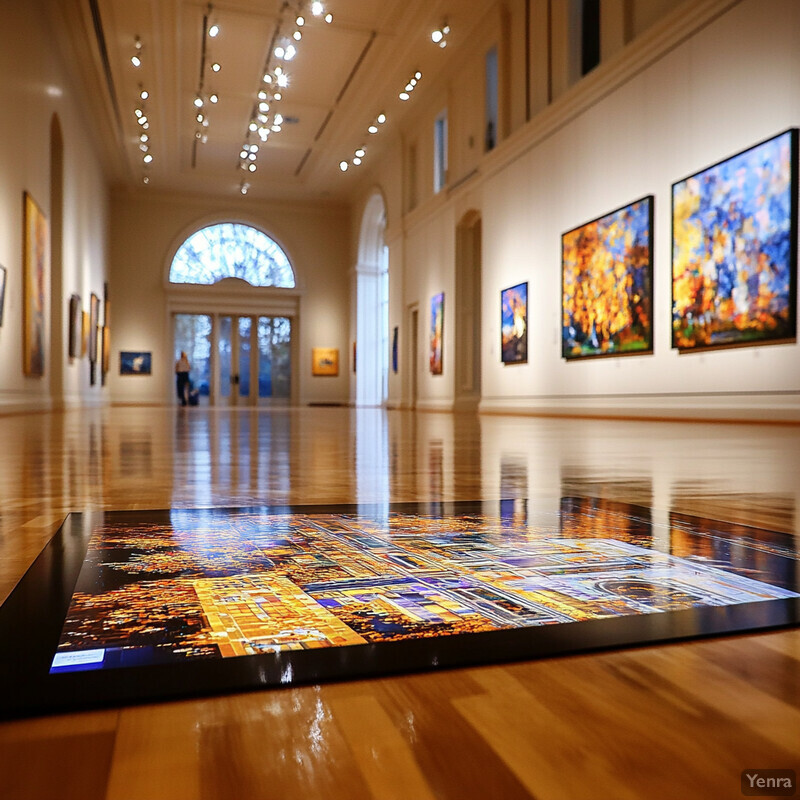
Deep learning approaches have been applied to gallery design. As mentioned above, Chen et al. (2024) developed an AI model that generates museum floor plans. They report that their tool “can generate many [layouts], greatly shortening the planning cycle”. The generated designs respect typical exhibit grouping and traffic flow seen in real museums. Additionally, some institutions use AI-powered heatmap software: by analyzing visitor movement data, algorithms can identify underutilized areas or choke points. Although peer-reviewed studies are limited, initial evidence (e.g. Chen et al., 2024) shows AI’s capacity to optimize layouts. As one report notes, next-generation museum software (e.g. Terentia) is explicitly building features like “smart mapping” to detect spatial patterns and suggest improvements.
18. Facilitating Cross-Institutional Collaborations
AI enables sharing and combining collections across institutions. By using common ontologies and machine learning, it can match items in different museums (e.g. paintings of the same artist in two collections). AI tools can merge metadata from multiple sources, allowing curators to search across combined catalogs. Translation and recommendation engines help when cross-border exhibitions are planned, overcoming language differences and aligning narratives. In joint exhibitions, AI can suggest thematic connections by scanning all participating collections for relevant items. In this way, AI breaks down silos, making it easier for museums to cooperate on loans, traveling shows or digital exhibitions.
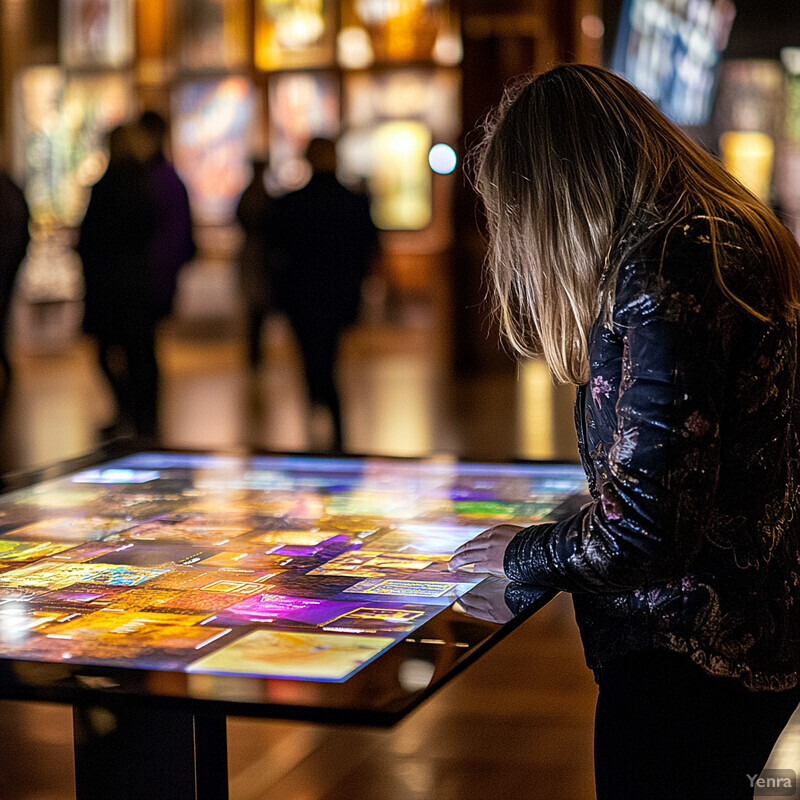
International policy and industry sources recognize AI’s role in collaboration. The Council of Europe (2024) emphasizes that “AI-driven translation tools and cross-cultural recommendation systems can foster greater international collaboration,” enabling better dialogue between cultural institutions. This implies that AI can automatically align content across languages and regions. On the practical side, museum software vendors are building solutions for shared collections. For example, an upcoming feature of a GLAM (Galleries, Libraries, Archives, Museums) platform will “merge collections from multiple sources” and link related items using semantic analysis. These developments illustrate that AI technologies—ranging from knowledge graphs to semantic search—are actively being developed to connect datasets and institutions (Council of Europe, 2024; American Alliance of Museums, 2024).